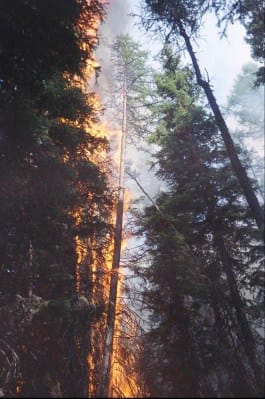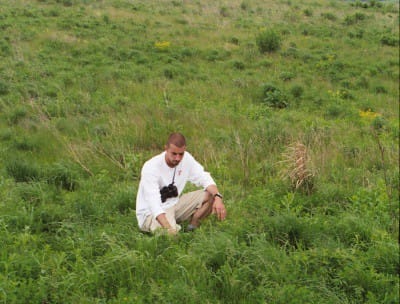
It was on every news channel, in every living room, across North America. This past October we were witness to a drama that has been played out repeatedly for over several million years, long before man and his attempt at suppressing perpetual and relentless fire. Southern California and it’s glamorously counties were the stage upon which weather, topography and fuel acted together to host massive, ‘catastrophic’ wildfire. The media broadcast the human dimension of such a barrage of wildland and structural fire; appropriately so, some 3000 plus structures and nearly one million acres burned during this annual siege, but the underlying ecological reasons for the event were barely exposed. Why is California burning and how does this affect its wildlife?
Regardless of intent, be it arson, accident or lightning, the ignition source is inevitable. The land is ready and willing to burn because it lies within a specific ‘fire regime’. Fire regimes are simply pattern descriptors for how fire moves across an area. As fire over millennia travels through a particular landscape it changes the vegetation that grows creating a unique regime. Repeated burning applies a “fittest for survival” pressure, allowing only plants that can counter fire’s effects by evolving defensive techniques to persist.
Southern California is home to a particular group of vegetation called chaparral. Chaparral is a classification of several shrub-like plant species including manzanita (Arctostaphylos sp.), chamise (Adenostoma sp.) and scrub oak (Quercus sp.). These plants have evolved tactics that utilize fire to increase germination, sprouting and to eliminate competitors. Chaparral can increase their flammability as they age by shedding their bark into tinder, having low moisture contents and producing oily substances that act as accelerants. Once the fire has burned through chaparral it quickly regrows from its protected, insulated underground structures. Coupling this plant evolution with southern California’s steep topography, arid soils and foehn (pronounced “fern”) winds called the “Santa Ana,” creates a predictable history of frequent fire.
This fire regime, home to numerous California counties has a fire frequency (the interval fire occurs within a given time period) of approximately 20 to 35 years. That is, you can expect to have any given piece of landscape burn within this time period and continue this cycle indefinitely without jeopardizing the vegetative communities. Historically, this would produce low-intensity fires, with occasional high levels of intensity based on drought, mortality, diseases, etc. However, we have long since departed natural historical fire frequencies by long term suppression and exclusion of fire altogether in an ecosystem built and maintained by fire. This has created more frequent, catastrophic fires—catastrophic in terms of vegetation survival and property conservation as more and more structures are being built on steep grades in the heart of the chaparral fire regime. The outcome of this is what was seen in detail on news broadcasts as wildfire crews raced to contain fires and triage structures built in the path of predictable history.
As plants have adapted to particular fire regimes and fire frequencies, so have the wildlife that inhabit these areas. The species of wildlife that occupy the landscape have evolved with the fire regime, and may actually flourish by the effects of the fire on their habitat. When fire advances through an ecosystem, wildlife rarely are directly affected mortality wise by such events. They simply get out of the way as an immediate response. The potential for death certainly exists—high temperatures, steep topography, and limited mobility can be the demise of wildlife at the individual level. The most direct cost to wildlife is the long-term response due to the alteration of the fire regime. A change in habitat via vegetative components will eventually change the diversity and species composition of a given landscape. Wildlife necessities of food, water, shelter and space are directly influenced by habitat structure. If that structure has evolved around fire, as is the case in southern California, and the frequency of fire is altered, the occupying wildlife will change over time as well. The wildlife that leave typically return once the fire is suppressed and fire crews have dissipated.
If the habitat is altered too much, wildlife may emigrate, or move to another more suitable location until the original can recuperate. The alteration or departure of historic fire regimes often create fire intensities that alter vegetative components drastically for long periods of time, in turn pushing native fauna out of traditional areas perhaps indefinitely. Immigration occurs by wildlife that require the “new” habitat formed by fire and can be attracted to food resources associated with post-fire plant growth (deer grazing) and decreased cover from predation (raptors searching for prey).

Future news broadcasts from Southern California will have a similar appearance, only the fire crews will be more experienced, the vegetative plants perhaps more combustive and the wildlife, for a time, avoiding flame and camera altogether. The fact is, not much in our world, let alone North America, has been uninfluenced by fire. It is one of the few mechanisms of disturbance and change that has survived hundreds of millions of years. The future will be a balance of careful management, suppression, careful reintroduction of fire through prescription, and more defensible building practices.
Living with wild land fire is a matter of coexistence, removing fire is simply not an option.







